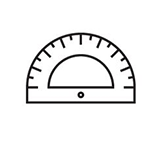멸종한 기형 부족류(Extinct Bivalve /Rudistid clam)10128-01 

| 국내/해외배송 | |
|---|---|
| 배송비 방법 | 택배 |
| 배송비 | 4,000원 (50,000원 이상 구매 시 무료) |
| 수량 |
|
| 상품 정보 | 가격 | 삭제 |
|---|---|---|
| [총 상품금액(수량)] 0 (0개) | ||
멸종한 부족류(Extinct Bivalve /Rudistid clam)
학명(Name) : Coralliochama orcutti White 1885/C.flourici Damestoy 1965
분류(Taxonomy) : Phylum(Mollusca), Class(Bivalvia), Order(Hippuritoida), Family(Caprinidae)
지질시대(Age) : Late Creataceous
지층(Formation) : Rosario Formation (Late Campanian to Maestrichtian age)
원산지(Location) : Punta Banda, Baja California, Mexico
크기(Size) : Rudistid clam is 125 mm long by 85 mm wide
내용 : 루디스트(Rudist)은 저위도의 따뜻하고 얕은 바다에서 중생대 쥬라기와 백악기동안 살았던 그룹이다. 이들은 백악기와 신생대제3기의 경계에서 모두 멸종되었다. 대부분의 루디스트부족류의 공통점은 대부분의 정상적인 부족류와 많은 변화가 있고, 기괴하고 때로는 아주 큰 껍질들을 가지고 있다.
멸종한 아주 특별한 조개인 루디스트 조개(부족류)는 한쪽은 현재의 조개와 같지만 또 다른 한쪽은 해저에 깁숙하게 고착시킨 채로 살았다. 표본의 이미지에서 보든 한쪽은 조개모양과 비슷하지만 또 다른쪽은 마치 고구마 같이 원추형으로 긴 모습이다. 아주 아주 희귀한 조개표본이다. 이들은 백악기에 산호초를 만들어냈던 생물들 가운데 루디스트(Rudist)도 끼어 있었다. 루디스트(Rudist)’라는 명칭은 ‘잔해, 폐허’를 의미하는 라틴어 ‘Rudus’에서 파생된 것이다.
루디스트(Rudists)는 중생대 쥬라기에 등장한 해양 이형치형부족류로 그 모양이 링, 튜브 또는 박스형태로 생긴 그룹을 말한다. 그리고 이들은 중생대 백악기에 티테스해 인근에서 크게 번성했다.
(티테스해/the Tethys Ocean)란? : 티모르섬, 수마트라섬, 인도차이나반도, 히말라야, 파미르, 힌두쿠시산맥, 소아시아, 지중해 방면으로 넓게 퍼져 있는 고생대~제3기의 옛 지중해. 이 바다를 경계로 하여 앙가라대륙이 북쪽에, 곤드와나대륙이 남쪽에 위치하고 있었다. 이 해역에서는 많은 시대의 열대~아열대성 해양동물군이 알려졌고, 우리나라도 한때 이 고생물지리구에 포함되었다. 제3기 중간 무렵에 북상한 인도아대륙과 유라시아대륙과의 합체에 의해, 이 해역은 동서로 나뉘어졌다. 현재의 지중해는 이 테티스해의 흔적이라고 한다. 북미 남부나 중미지역도 당시 테티스해의 연장 위에 있었다고 추측하고 있다.)
Rudist are a group of bivalves which evolved during the Late Jurassic to Cretaceous and lived in warm, shallow oceans of low latitudes. They became extinct at the Cretaceous/Tertiary boundary. Most rudists have not much in common with 'normal' bivalves and developed bizarre, occasionally large shells.
Rudists are a group of box, tube or ring shaped marine heterodont bivalves that arose during the Jurassic, and became so diverse during the Cretaceous that they were major reef-building organisms in the Tethys Ocean.
Their "classic" morphology consisted of a lower, roughly conical valve that was attached to the seafloor or to neighboring rudists, and a smaller upper valve that served as a kind of lid for the organism. The small upper valve could take a variety of interesting forms, including: a simple flat lid, a low cone, a spiral, and even a star-shaped form (Johnson, 2002).
The rudists went extinct at the end of the Cretaceous, apparently as a result of the Cretaceous–Tertiary extinction event. It had been thought that this group began a decline about 2.5 million years earlier which culminated in complete extinction half a million years before the end of the Cretaceous (Johnson, 2002). However, evidence now suggests that rudists survived until the mass extinction event, and perished in it (Steuber et al. 2002).



















 확대보기 및 상세정보
확대보기 및 상세정보